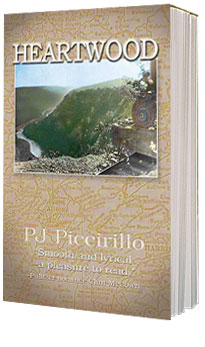Heartwood | Author's Notes
A Desert Where Had Been Trees
By 1900, Pennsylvania had lost more than 60 percent of its forests. In the valleys of the denuded landscape, rains washed soil into the waterways; they became shallower, hence warmer, and species of fish suited to colder waters perished. Devastation came, as well, from afar. Starting in 1908, the chestnut blight--a motif in Heartwood, along with the extinct passenger pigeon--swept the state, destroying in 20 years the eastern forest’s most common species. Today, acidic rain, invasive plant species and introduced, parasitic insects continue to threaten, and in some cases annihilate, native tree species, radically altering Penn’s woods. Elm, ash, hemlock (the state tree), dogwood, and others are under threat.
One by one over the next twenty years, in the hundreds of lumber towns across the plateau, the mill whistle fluted its final call to work, and the last log was conveyed up the mill’s ladder, or “jackslip.” The succession of Allegheny lumbering stepped into its most dormant stage. Professional loggers, like Heartwood’s Cowboy and Billy Gaines, moved on--some to West Virginia, some to the states around the great lakes, others to the West.
In the second decade of the twentieth century, at the time the main action in Heartwood closes, the chaff of a once seemingly inexhaustible forest--dead stumps, dry branches, scrub brush and saplings--had become tinder for rampant wildfires that devastated some 350,000 acres a year. Into the 1930s, fires still plagued the landscape, and young men with the Civilian Conservation Corps, put to work by President F. D. Roosevelt, fought the flames. In the wake of the infernos, the CCC boys, as they were known here, planted trees and built dams, trails, roads, and parks, the seeds of a new countryside and the perpetuation of the rural, woods-dependent way of life favored by people who’d chosen to stick it out in north central Pennsylvania.

